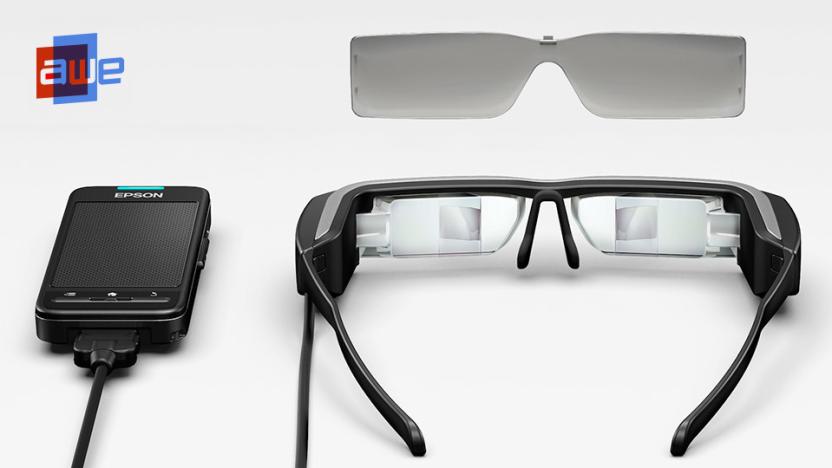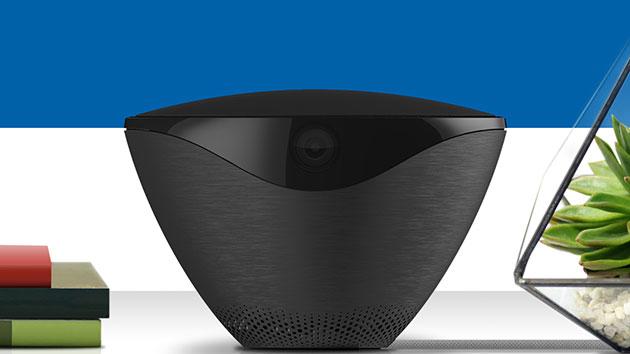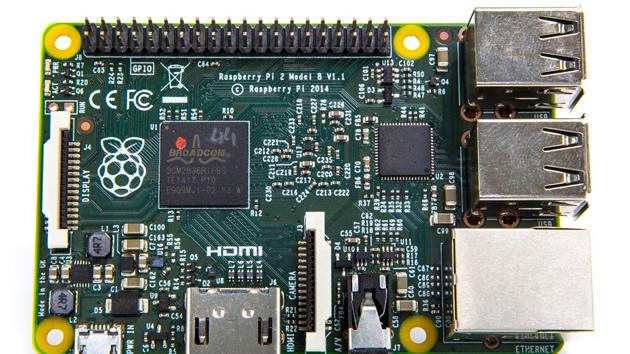IoT
Latest

The Awair helps you breathe easier by tracking air quality
If you have allergies, you know that air quality can mean the difference between having a productive day and being a congested, sneezing pile of sadness. The Awair from Bitfinder analyzes the indoor temperature, humidity, carbon dioxide, fine dust particles and volatile organic compounds in the air and uses that information to provide individual recommendations via a companion app and trigger IoT devices help reduce the chances of spending the day leaking snot.

Engadget giveaway: win a pair of smart glasses courtesy of Augmented World Expo!
There's no denying that virtual and augmented reality are on a roll lately. Oculus, HTC and a host of others have committed to producing quality VR experiences and Microsoft's Hololens put the buzz back into augmented concepts. That's just the tip of the iceberg, though. If you want to find out what's really going on in those circles, as well as IoT and wearable tech, you may want to head to Silicon Valley next month for the 2015 Augmented World Expo (AWE). The event includes more than 20 workshops, 200 interactive demos and over 100 talks by some of the best in the business. The folks at AWE have been nice enough to offer $19 Expo-only tickets for our readers (code: ENGADGET19), but for one lucky soul, the pot is quite a bit sweeter. We have a pair of Epson Moverio BT-200 smart glasses, along with two all-access VIP tickets to the expo for the winner this week. Just head on down to the Rafflecopter widget below for up to three chances at winning Epson's latest augmented tech and unfettered access to the Augmented World Expo at the Santa Clara Convention Center in California, June 8-10th. Winner: congratulations to Ron S. of Bernalillo, NM!

ADT partners with LG and Nest to pair home automation with security
ADT already dipped its toe in the home automation waters, but the company plans to make an even bigger splash in the months to come. It announced today that it'll leverage tech from LG and Nest to add to its connected home tool set. First, ADT and LG are working on a so-called all-in-one "Smart Security" device (pictured above) that'll offer not only video monitoring, but it will act as a hub for connecting other gadgets as well. As you might expect, this means you'll be able to control the whole lot from ADT's app; however, the device isn't schedule to launch until this fall.

Qualcomm brings Bluetooth support to AllPlay audio streaming
Qualcomm just announced additional ways to input audio into its AllPlay WiFi streaming platform. The feature now supports Bluetooth and analog audio input on supported devices. Once the Bluetooth-streamed audio hits the "master" device, the audio is then distributed via WiFi to satellite speakers that don't necessarily have to be from the same manufacturers. Bluetooth has become the de facto method of wirelessly streaming music to speakers and it makes sense for Qualcomm to start supporting the protocol. Analog inputs expand the reach of AllPlay to devices like turntables and home stereo systems without wireless support.

Apple could be delaying HomeKit by a couple months (Update: Nope)
Citing sources close to the project, Fortune reports that Apple plans to delay the release of its much anticipated HomeKit platform. While the company has never actually provided a firm release date, it's been widely speculated that HomeKit would hit sometime mid-summer, around June or July. Now it would appear that users will have to wait until August or September to begin smartening up their homes. Fortune's sources blame rapidly bloating code for the delay. Apparently, the current programming iteration demands far too much memory from smaller IoT devices and Apple figures it will need an extra month or so to trim the code down to more functional specs.

Samsung's Artik platform aims to jump-start the Internet of Things
We've been hearing plenty about the "Internet of Things" (IoT) lately, but despite all the hype there's still a sore lack of compelling connected gadgetry for you to buy. Now Samsung hopes to change that with Artik, its new platform meant to make it easier for developers to build IoT solutions. To kick things off, Samsung is debuting three new IoT modules: Artik 1, a tiny 12mm device with Bluetooth and a nine-axis movement sensor; Artik 5, which runs a faster 1 gigahertz dual-core processor and on-board storage; and Artik 10, which is powered by an octa-core processor, 2GB of RAM and 16GB of storage. The latter also includes Wi-Fi and Zigbee connectivity, which means it should play nicely with plenty of existing IoT equipment. All of the Artik hardware includes a secure-element, which should help lock things down better than software encryption, and Samsung's also providing an IoT software stack so developers can get up and running quickly. And while the Artik platform is technically open, Samsung's also pushing its cloud services heavily to developers.

Comcast's Xfinity Home works with automation tech you already own
Comcast's Xfinity Home has been automating living spaces for a while, but now the company is opening up the cloud-based system to more gadgets. Starting this summer, customers can add devices from August, Automatic, Cuff, Leeo, Lutron, Rachio, SkyBell and Whistle to the kit that already wrangles motion sensors, connected outlets, cameras and more. We're talking about things like August's smart locks, Automatic's car tracker and Cuff's smart jewelery. What's more, Comcast is teaming up with Nest as part of the Works with Nest effort to bring that smart thermostat into the fold, too. In addition to those new partners, Comcast will open up an SDK later this year alongside a Works with Xfinity Home certification program to make sure approved devices can be used with minimal headaches.

Get your Windows 10 preview for Raspberry Pi 2 while it's hot
Day one of Microsoft's Build 2015 conference is in the books, but that doesn't mean the news has stopped. The Windows 10 IoT Core Insider developer preview (phew!) has launched for small devices including the Raspberry Pi 2. Redmond admits that it's still pretty rough around the edges, but it's hoping that the maker community can provide feedback for how the platform's turning out along the road to a full release. What's more, the software giant is partnering with Arduino for a series of "Arduino Certified" products to bring the ubiquitous DIY boards into the Windows family and take advantage of all that the software has to offer. For example, cloud computing, a familiar user interface, image processing and a ton more. It follows the theme of bringing everything under one roof that Nadella and Co. have been so vocal about lately, and should hopefully help tinkerers develop some pretty powerful stuff in their garage.

Quirky wine rack could refill itself using Amazon Dash
Do you wake up in the middle of the night, soaked in cold sweat and frantically worrying, "Oh God, is my wine rack sufficiently full?" Well, fear not, because this automated wine rack from Quirky not only keeps tabs on your vital vino supply, it could even automatically restock its cellar when you run out of wine. The Poppy Reserve, as it's called, is a two-part system consisting of a smart rack and its associated app. The semi-autonomous wine rack comes packed with temperature, weight and humidity sensors. That way it can monitor how much wine you have left as well as whether they're being stored under the proper conditions.

Play Whac-A-Mole on these weather-predicting smart ceramics
Most consumer IoT devices we've come across are made out of dull plastic, so excuse us for getting a bit excited over these porcelain smart mugs and vases at IDF in Shenzhen. Yes, porcelain, courtesy of Chinese ODM Thread Technology who's integrated Intel's tiny Edison computer module into these white ware pieces. And thanks to the translucent nature of the ceramic material, the company's able to add a simple 12 x 16-dot LED touchscreen underneath the inner wall. Once turned on, you can scroll through features such as weather forecast, music (either from a phone via Bluetooth or from the 4GB of onboard storage; built-in speaker), WeChat notification (voice playback and reply supported), dice and even a simple Whac-A-Mole game. Both devices have a conductive charging mat as well.

Windows 10 launches this summer in 190 countries (update)
Microsoft's leaner, meaner, latest iteration of Windows is coming in just a few months, and it's launching in 170 countries, in 111 languages. Don't forget: Windows 10 is a free upgrade if you're already using Windows 7 or 8. Hiding in its imposing shadow, and launching at the same time, the company will release special free version of its OS for Internet of Things devices, which Microsoft's Terry Myerson reckons could well find its way into ATMs and ultrasound machines. Curiously, anyone that has a Xiaomi Mi 4 will also able to download the preview of Windows 10 ahead of it's release -- despite it being an Android phone.

PancakeBot prints flapjacks in any shape you can trace
We've all been there. Awake at some ludicrously early hour -- on a Saturday morning no less -- slaving away over a hot griddle only to have your pancakes snubbed because they're too circular. Next time, impress your brood by frying up some custom-designed flapjacks using this robotic pancake printer. It's called the PancakeBot. This device combines an electric griddle and a patent-pending batter dispensing system to effectively "print" out pancakes virtually in any shape you can imagine -- or at least trace.

Windows 10 is coming to the Raspberry Pi 2 for free
Over the years, the Raspberry Pi has helped children learn to code and has powered many homebrew projects around the world, but some users have often lamented at the lack Windows support. Luckily, now that the Raspberry Pi 2 is here, that's all about to change. Microsoft has announced that it will support the Raspberry Pi Foundation's latest board, making a specialized version of its Windows 10 operating system available to the wider Pi community for free via its Windows Developer Program for IoT (Internet of Things).

FTC to connected device makers: Focus on security and privacy
The Federal Trade Commission just laid out its initial recommendations for the burgeoning Internet of Things industry -- and they're pretty much what you'd expect. In an extensive report (PDF) released this morning, the agency emphasized that connected device makers will need to think hard about security, as well as how they manage consumers' private information. That shouldn't be news to any company that's been developing web-enabled products over the past few decades, but it'll be particularly important when even the most mundane devices in our lives are filled with sensors and connected. "The only way for the Internet of Things to reach its full potential for innovation is with the trust of American consumers," FTC Chairwoman Edith Ramirez said in a statement. "We believe that by adopting the best practices we've laid out, businesses will be better able to provide consumers the protections they want and allow the benefits of the Internet of Things to be fully realized."

4K, VR and a watch by Apple: What we're excited for in 2015
Now that we've emerged from the technological wonderland of CES unscathed, the rest of 2015 is coming into focus. It's going to be a year where the smart home, connected cars and the entire "Internet of Things" concept finally reaches everyday consumers. And, on the whole, it looks like we're going to see plenty of other long-anticipated products and technological concepts come to fruition. Barring any major surprises, it looks like 2015 is going to be a year of evolutionary progress, rather than a revolutionary one. But that doesn't mean we're not excited for what's to come.

Delsey's luggage weighs itself, charges phones, knows the weather
CES was flooded with a bunch of "internet of things" for the home, but frequent travelers will likely appreciate this connected luggage better. Leading luggage maker Delsey has been working on a connected suitcase called Pluggage for the past two years and has recently tested a working prototype, as you can see in the video below the fold. Before Pluggage hits the market, though, the company wants your help in choosing which high-tech features it should give the suitcase. Your choices are:

A connected plant pot meets a smart bulb at CES
You may not realize this yet, but you're probably going to be buying a connected home gadget at some point this year. After endless hype, we're finally beginning to see smart home products that are both affordable and easy to use. Case in point: Parrot's new self-watering smart flower pot ($60) and Misfit's colorful Bolt smart lightbulb ($50). We brought Tim Golnik, Misfit's vice president of product and design, and Jerome Bouvard, Parrot's smart pot product manager, to the Engadget CES stage to chat about their new products and the state of the connected home. And as a bonus, we also got a live demonstration of the Parrot Pot's self-watering mechanism in action. Check out our full conversation below.

BlackBerry climbs out of your pocket and into the internet of things
BlackBerry's been doing its best to engineer a smartphone comeback, but its future doesn't just hinge on stuff that goes in your pockets. Those plucky Canadians have also had their sights on cracking the fabled internet of things, and today it's finally pulled back the curtain on a cloud-friendly system meant to do just that.

Parrot's latest plant sensors can also do the watering for you
Following last year's Flower Power plant sensor, Parrot's decided to take it to the next level with two new Bluetooth Smart devices: the H2O and the Pot (pictured above). Starting off with the smaller device, the H2O is essentially a direct successor to the Flower Power, but featuring more accurate monitoring (of soil moisture level, soil fertility, temperature and brightness) and the new watering capability. The latter part is done so by attaching a screw-top water bottle of up to two liters, which will provide up to three weeks of autonomous irrigation with a soft jet. With the existing database of over 8,000 plants, the device can determine the optimal amount of water needed for your plant, and the companion app will remind you if more water or fertilizer is needed.

Intel shows off its own 'Internet of Things' platform
It wouldn't be a stretch to say that Intel is a bit obsessed with the Internet of Things (IoT). Connected gadgets were all over Intel's booth at the last CES, and it's one of the fastest growing portions of the company's business. The chip giant also kicked off an IoT consortium together with Samsung, Dell, and others earlier this year. Now, Intel is taking another major step in this arena with the launch of its IoT Platform, which it says will help companies to more easily test, deploy, and secure smart devices. Everything the company is doing is a direct response to Qualcomm, which stole the mobile chip market from Intel and is already well-poised to take on IoT with the AllSeen Alliance and AllJoyn standard, both of which aim to unify the fractured IoT market. But it seems Intel has learned the dangers of being late to a potentially lucrative new market (even if it did so the hard way).










